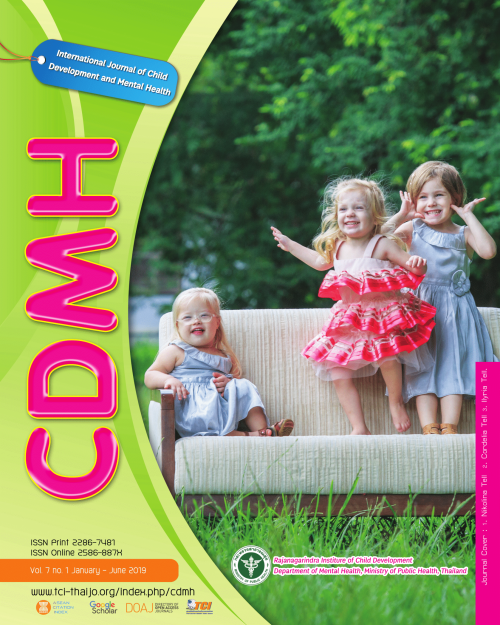EEG Neurofeedback Brain Training for Epilepsy to Reduce Seizures EEG Neurofeedback Training for Epilepsy
Main Article Content
Abstract
To review papers on epilepsy and the use of neurofeedback therapy to reduce seizures. Papers searched were from Pubmed, Proquest, Science Direct, etc. including the review of relevant journals e.g. Annals of Indian Academy of Neurology, HHS Public Script, Basic and Cinical Neuroscience, Current Opinion in Neurology, International Journal of Neurorehabilitation, Neurofeedback and Neuromodulation Techniques and Applications, Measurement Science Review, Journal of Neurotherapy. Common treatments such as surgery, pharmacotherapy, neurostimulation and diet therapy were used for epilepsy but had some limitations. Neurofeedback therapy was found, among those treatments, to be useful for epilepsy. There were two key points of successful protocol used in neurofeedback therapy: sensorimotorrhythm and slowcortical potential enabling a reduction of seizures.
Article Details
![]()
Creative Commons License
This work is licensed under a Creative Commons Attribution-NonCommercial-No Derivatives 4.0 International (CC BY-NC-ND 4.0)
The authors retain copyright and permit the journal the copyright of first publication
Articles, once having passed the review process and accepted for publication in the CDMH Journal, are copyrighted under the CDMH Journal, Department of Mental Health, Ministry of Public Health. Please be aware distribution of CDMH Journal content for commercial purposes without permission is expressly prohibited. However, distribution with intent to educate, advocate, or spread awareness within the general public and research communities is permitted and encouraged with the understanding that the CDMH Journal Editorial Board do not hold jurisdiction or liability for any accompanying comments, text, or information from third parties, either in favor for or against the original article’s assertions, conclusions, methodology, or content.
References
Ding, K., Gupta, P. K., & Diaz-Arrastia, R. (2016). Epilepsy after traumatic brain injury. In Translational research in
traumatic brain injury. CRC Press/Taylor and Francis Group. Retrieved from
https://www.ncbi.nlm.nih.gov/books/NBK326716/
Galindo-Mendez, B., Mayor, L. C., Velandia-Hurtado, F., & Calderon-Ospina, C. (2015). Failure of antiepileptic drugs in
controlling seizures in epilepsy: What do we do next? Epilepsy & Behavior Case Reports, 4, 6-8.
Gururaj, G. W., Satishchandra, P., & Amudhan, S. (2015). Epilepsy in India I: Epidemiology and public health. Annals of
Indian Academy of Neurology, 18(3), 263-277.
Jette, N., Reid, A. Y., & Wiebe, S. (2014). Surgical management of epilepsy. CMAJ, 186(13), 997-1004.
Marzbani, H., Marateb, H., & Mansourian, M. (2016). Methodological Note: Neurofeedback: A Comprehensive Review
on System Design, Methodology and Clinical Applications. Basic and Clinical Neuroscience Journal, 7(2), 143-158.
Morrell, M. (2006). Brain stimulation for epilepsy: can scheduled or responsive neurostimulation stop seizures? Current
Opinion in Neurology, 19(2), 164-168.
Neal, E. G., & Cross, J. H. (2010). Efficacy of dietary treatments for epilepsy. Journal of Human Nutrition and Dietetics,
23(2), 113-119.
Nagai, Y. (2011). Biofeedback and epilepsy. Current Neurology and Neuroscience Reports, 11(4), 443-450.
Selaa, R., & Shaked–Toledanob, M. (2014). Neurofeedback treatments enable the EEG-normalization and total seizure
control of epilepsy–A Case Study. In (vol. 39, no. 2, pp. 142-143). 233 Spring st, NEW YORK, NY 10013 USA:
Springer/plenum publishers.
Shin, H. W., Jewells, V., Hadar, E., Fisher, T., & Hinn, A. (2014). Review of epilepsy-etiology, diagnostic evaluation and
treatment. International Journal of Neurorehabilitation, 1(130), 2376-0281.
Stafstrom, C. E., & Carmant, L. (2015). Seizures and Epilepsy: An Overview for Neuroscientists. Cold Spring Harbor
Perspectives in Medicine, 5(6), a022426-a022426.
Sterman, M. B. (1974). Sleep. Limbic and Autonomic Nervous Systems Research, 395-417.
Strehl, U. (2009). Slow cortical potentials neurofeedback. Journal of Neurotherapy, 13(2), 117-126.
Tan, G., Corydon Hammond, D., Walker, J., Broelz, E., & Strehl, U. (2011). Neurofeedback and Epilepsy.
Neurofeedback and Neuromodulation Techniques and Applications, 183-436.
Teplan, M. (2002). Fundamentals of EEG measurement. Measurement science review, 2(2), 1-11.
Ye, F., Li, X., Jiang, W., Sun, H., & Liu, J. (2015). Efficacy of and Patient Compliance with a
Ketogenic Diet in Adults with Intractable Epilepsy: A Meta-Analysis. Journal of Clinical Neurology, 11(1), 26.


